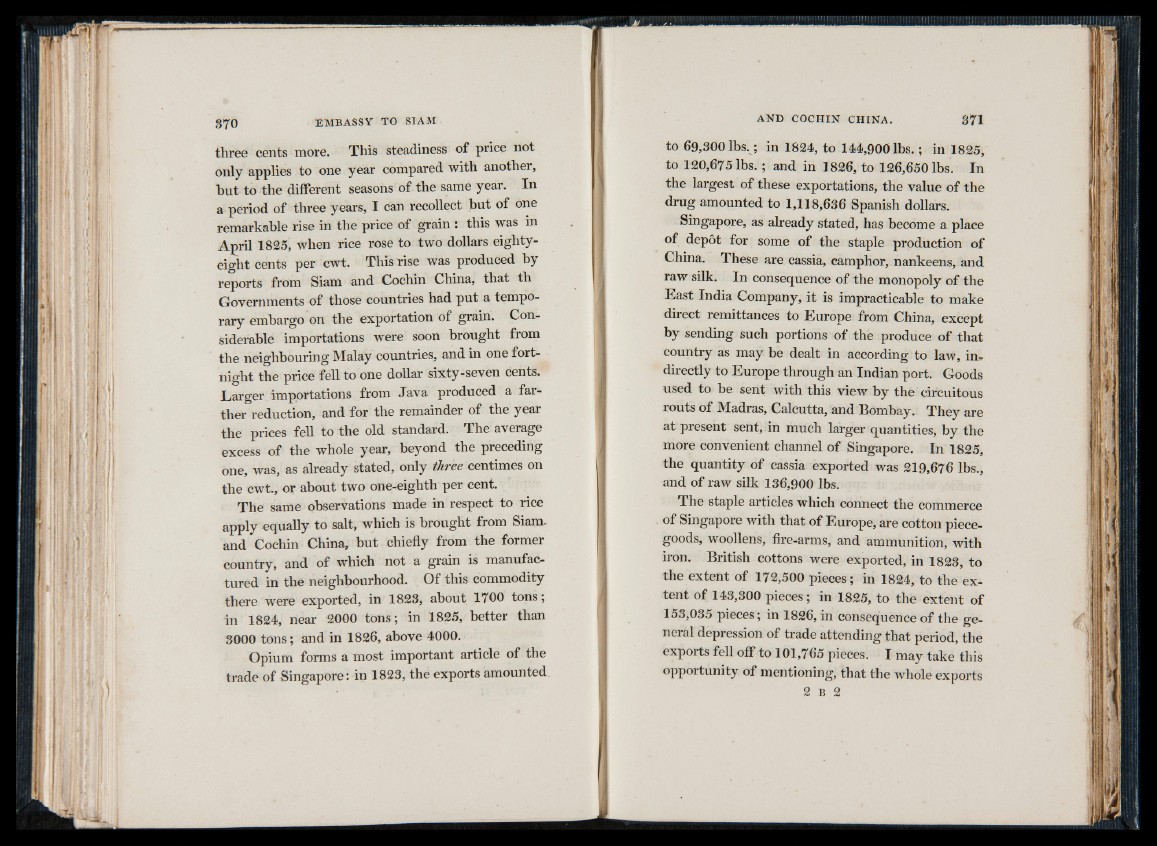
three cents more. This steadiness of price not
only applies to one year compared with another,
but to the different seasons of the same year. In
a period of three years, I can recollect but of one
remarkable rise in the price of grain : this was in
April 1825, when rice rose to two dollars eighty-
eight cents per cwt. This rise was produced by
reports from Siam and Cochin China, that th
Governments of those countries had put a temporary
embargo on the exportation of grain. Considerable
importations were soon brought from
the neighbouring Malay countries, and in one fortnight
the price fell to one dollar sixty-seven cents.
Larger importations from Java produced a farther
reduction, and for the remainder of the year
the prices fell to the old standard. The average
excess of the whole year, beyond the preceding
one, was, as already stated, only three centimes on
the cwt., or about two one-eighth per cent.
The same observations made in respect to rice
apply equally to salt, which is brought from Siam-
and Cochin China, but chiefly from the former
country, and of which not a grain is manufactured
in the neighbourhood. Of this commodity
there were exported, in 1823, about 1700 tons;
in 1824, near 2000 tons; in 1825, better than
3000 tons; and in 1826, above 4000.
Opium forms a most important article of the
trade of Singapore: in 1823, the exports amounted
to 69,300 lbs.; in 1824, to 144,900 lb s.; in 1825,
to 120,675 lb s.; and in 3826, to 126,650lbs. In
the largest of these exportations, the value of the
drug amounted to 1,118,636 Spanish dollars.
Singapore, as already stated, has become a place
of depot for some of the staple production of
China. These are cassia, camphor, nankeens, and
raw silk. In consequence of the monopoly of the
East India Company, it is impracticable to make
direct remittances to Europe from China, except
by sending such portions of the produce of that
country as may be dealt in according to laiv, in,
directly to Europe through an Indian port. Goods
used to be sent with this view by the circuitous
routs of Madras, Calcutta, and Bombay. They are
at present sent, in much larger quantities, by the
more convenient channel of Singapore. In 1825,
the quantity of cassia exported was 219,676 lbs.,
and of raw silk 136,900 lbs.
The staple articles which connect the commerce
of Singapore with that of Europe, are cotton piece-
goods, woollens, fire-arms, and ammunition, with
iron. British cottons were exported, in 1823, to
the extent of 172,500 pieces; in 1824, to the extent
of 143,300 pieces; in 1825, to the extent of
153,035 pieces; in 1826, in consequence of the general
depression of trade attending that period, the
exports fell off to 101,765 pieces. I may take’this
opportunity of mentioning, that the whole exports
2 B 2